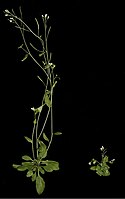
Functional differentiation of two general-odorant binding proteins in Hyphantria cunea (Drury) (Lepidoptera: Erebidae).
Sign Up to like & getrecommendations! Published in 2023 at "Pest management science"
DOI: 10.1002/ps.7515
Abstract: BACKGROUND General odor-binding proteins (GOBPs) play critical roles in insect olfactory recognition of sex pheromones and plant volatiles. Therefore, the identification of GOBPs in Hyphantria cunea (Drury) based on their characterization to pheromone components and… read more here.
Keywords: binding; plant volatiles; cunea drury; binding proteins ... See more keywords

Modulation of predator attraction to pheromones of two prey species by stereochemistry of plant volatiles
Sign Up to like & getrecommendations! Published in 2017 at "Oecologia"
DOI: 10.1007/s004420000606
Abstract: Predators and parasitoids are known to exploit both plant volatiles and herbivore pheromones to locate their insect prey. However, the interaction of these chemical cues in prey location, and the implications of multiple sources of… read more here.
Keywords: plant; predator attraction; pheromones two; predator ... See more keywords

Parasitoid wasps’ exposure to host-infested plant volatiles affects their olfactory cognition of host-infested plants
Sign Up to like & getrecommendations! Published in 2017 at "Animal Cognition"
DOI: 10.1007/s10071-017-1141-3
Abstract: Using Cotesia vestalis, a parasitoid wasp of diamondback moth larvae and three crucifer plant species (cabbage, komatsuna, and Japanese radish), we examined the effects of exposure to host-infested plant volatiles from one plant species on… read more here.
Keywords: infested plant; plant; exposure; host infested ... See more keywords

Evolutionary changes in an invasive plant support the defensive role of plant volatiles
Sign Up to like & getrecommendations! Published in 2021 at "Current Biology"
DOI: 10.1016/j.cub.2021.05.055
Abstract: Summary It is increasingly evident that plants interact with their outside world through the production of volatile organic compounds,1, 2, 3, 4, 5 but whether the volatiles have evolved to serve in plant defense is… read more here.
Keywords: invasive plant; plant; changes invasive; evolutionary changes ... See more keywords

Different binding properties of two general-odorant binding proteins in Athetis lepigone with sex pheromones, host plant volatiles and insecticides.
Sign Up to like & getrecommendations! Published in 2020 at "Pesticide biochemistry and physiology"
DOI: 10.1016/j.pestbp.2020.01.012
Abstract: Athetis lepigone (Alep) is a polyphagous pest native to Europe and Asia that has experienced major outbreaks in the summer maize area of China since 2011 and has shown evidence of resistance to some insecticides.… read more here.
Keywords: binding; sex pheromones; plant volatiles; athetis lepigone ... See more keywords

Plant Volatiles as Mate-Finding Cues for Insects.
Sign Up to like & getrecommendations! Published in 2018 at "Trends in plant science"
DOI: 10.1016/j.tplants.2017.11.004
Abstract: Plant volatiles are used not only by herbivorous insects to find their host plants, but also by the natural enemies of the herbivores to find their prey. There is also increasing evidence that plant volatiles,… read more here.
Keywords: insects; plant; mate finding; finding cues ... See more keywords

Behavioral responses of potato tuber moth (Phthorimaea operculella) to tobacco plant volatiles
Sign Up to like & getrecommendations! Published in 2020 at "Journal of Integrative Agriculture"
DOI: 10.1016/s2095-3119(19)62663-8
Abstract: Abstract Potato tuber moth (PTM) Phthorimaea operculella, also known as tobacco splitworm, is an important pest of tobacco plants. The knowledge on the interaction of tobacco plant volatiles and PTM behavior is limited. To clarify… read more here.
Keywords: potato tuber; tuber moth; tobacco plant; plant volatiles ... See more keywords

Plant volatiles: Active emission
Sign Up to like & getrecommendations! Published in 2017 at "Nature Plants"
DOI: 10.1038/nplants.2017.117
Abstract: Plants produce a multitude of volatile organic compounds (VOCs) to serve functions in reproduction and stress response. In leaves, stomatal closing might influence the emission of volatiles after their biosynthesis, but in tissues without stomata,… read more here.
Keywords: plant; epidermal cells; active emission; volatiles active ... See more keywords

Targeting diamondback moths in greenhouses by attracting specific native parasitoids with herbivory-induced plant volatiles
Sign Up to like & getrecommendations! Published in 2020 at "Royal Society Open Science"
DOI: 10.1098/rsos.201592
Abstract: We investigated the recruitment of specific parasitoids using a specific blend of synthetic herbivory-induced plant volatiles (HIPVs) as a novel method of pest control in greenhouses. In the Miyama rural area in Kyoto, Japan, diamondback… read more here.
Keywords: treated greenhouses; herbivory induced; induced plant; plant volatiles ... See more keywords

The general odorant receptor GmolOR9 from Grapholita molesta (Lepidoptera: Tortricidae) is mainly tuned to eight host‐plant volatiles
Sign Up to like & getrecommendations! Published in 2019 at "Insect Science"
DOI: 10.1111/1744-7917.12725
Abstract: Grapholita molesta is one of the most destructive fruit pests distributed worldwide. Odorant receptors (ORs) located on the dendritic membrane of chemosensory neurons are deemed to be key molecules for sensing exogenous chemical signals. In… read more here.
Keywords: grapholita molesta; molesta; host plant; tuned eight ... See more keywords

Two classic OBPs modulate the responses of female Holotrichia oblita to three major ester host plant volatiles
Sign Up to like & getrecommendations! Published in 2021 at "Insect Molecular Biology"
DOI: 10.1111/imb.12703
Abstract: Insects possess a fairly sophisticated olfactory system in their antennae to detect odorants essential for their survival and reproduction. Among them, insect first perceives odour sources by odorant‐binding proteins (OBPs) to locate host‐plants. Methyl salicylate,… read more here.
Keywords: responses female; ester; host; holotrichia oblita ... See more keywords